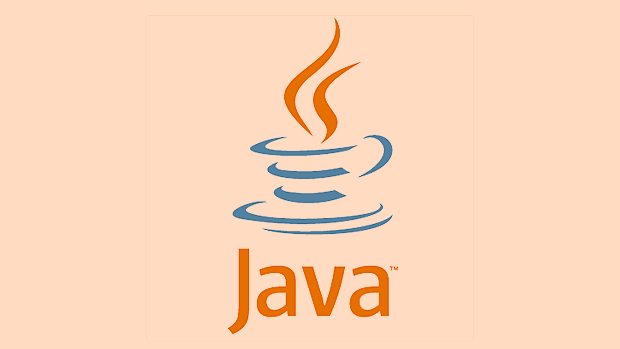The diamond operator in Java 7 simplifies generic class instantiation by allowing the omission of redundant type parameters. Before Java 7, developers had to specify the same type information on both sides of an assignment, leading to verbose code. With the diamond operator (), only the left-hand side requires explicit types, as the compiler infers the right-hand side types. This results in cleaner, more readable code while maintaining type safety. The feature works only when the left-hand side has explicit generic information and does not apply to raw types. Internally, it uses type inference at compile time, preserving the benefits of generics like compile-time checks. It is especially useful with collections and nested generics, such as List

The diamond operator in Java 7 is a shorthand syntax that allows you to omit the type arguments when creating an instance of a generic class. Before Java 7, when you declared and instantiated a generic class like ArrayList or HashMap, you had to specify the type parameters both on the left-hand side (the variable declaration) and the right-hand side (the object instantiation). For example:

Map<String, List<Integer>> map = new HashMap<String, List<Integer>>();
This can get repetitive and verbose, especially with complex nested types.
With the introduction of the diamond operator (<>) in Java 7, you only need to specify the type parameters on the left-hand side. The compiler infers the correct types for the instantiation on the right:

Map<String, List<Integer>> map = new HashMap<>();
This makes code cleaner and easier to read without sacrificing type safety.
Cleaner Code Without Redundant Type Declarations
Before Java 7, developers had to repeat the same generic types on both sides of the assignment. This redundancy didn't add value but increased the amount of code you needed to write and maintain.

Using the diamond operator reduces clutter. Here's a comparison:
Without diamond operator:
List<Map<String, Integer>> list = new ArrayList<Map<String, Integer>>();
With diamond operator:
List<Map<String, Integer>> list = new ArrayList<>();
You can see how much more readable the second version is — especially when dealing with deeply nested generics.
Just keep in mind:
- The diamond operator works only if the left-hand side of the assignment has explicit type information.
- If you're using raw types (not specifying any generics), the diamond operator won’t help and may lead to warnings or errors.
How It Works Under the Hood
The diamond operator doesn't change how generics work internally — it's purely a compile-time feature. When you use new HashMap<>(), the Java compiler looks at the variable declaration (Map<String, List<Integer>>) and infers what types should be used in the constructor.
It uses a process called type inference to determine the correct parameterized type. So while the code becomes shorter, it remains type-safe. You still get all the benefits of generics like compile-time checks and avoiding ClassCastException at runtime.
One thing to watch out for:
- In some cases, especially with method calls or complex inheritance hierarchies, the compiler might not be able to infer the correct type.
- If you run into such situations, you'll have to provide explicit type parameters again.
Practical Examples and Common Uses
Here are a few common scenarios where the diamond operator comes in handy:
Declaring collections:
List<String> names = new ArrayList<>(); Set<Integer> numbers = new HashSet<>();
Nested generics:
Map<String, List<Double>> data = new HashMap<>();
Custom generic classes:
Pair<String, Integer> entry = new Pair<>();
If you're working with older versions of Java (pre-7), or maintaining legacy code, you’ll often see the full type repeated. But once you start using Java 7 regularly, the diamond operator becomes second nature.
A few tips:
- Always make sure your variable declaration includes the full generic type so the compiler can infer correctly.
- Avoid mixing raw types with the diamond operator — it can cause unexpected behavior and suppress useful compiler warnings.
Basically, the diamond operator in Java 7 helps reduce boilerplate by letting the compiler infer generic type parameters during object creation. It's a small feature, but it makes writing and reading generic code a lot smoother.
The above is the detailed content of What is the Diamond Operator in Java 7?. For more information, please follow other related articles on the PHP Chinese website!

Hot AI Tools

Undress AI Tool
Undress images for free

Undresser.AI Undress
AI-powered app for creating realistic nude photos

AI Clothes Remover
Online AI tool for removing clothes from photos.

Clothoff.io
AI clothes remover

Video Face Swap
Swap faces in any video effortlessly with our completely free AI face swap tool!

Hot Article

Hot Tools

Notepad++7.3.1
Easy-to-use and free code editor

SublimeText3 Chinese version
Chinese version, very easy to use

Zend Studio 13.0.1
Powerful PHP integrated development environment

Dreamweaver CS6
Visual web development tools

SublimeText3 Mac version
God-level code editing software (SublimeText3)

Hot Topics
 What is the `enum` type in Java?
Jul 02, 2025 am 01:31 AM
What is the `enum` type in Java?
Jul 02, 2025 am 01:31 AM
Enums in Java are special classes that represent fixed number of constant values. 1. Use the enum keyword definition; 2. Each enum value is a public static final instance of the enum type; 3. It can include fields, constructors and methods to add behavior to each constant; 4. It can be used in switch statements, supports direct comparison, and provides built-in methods such as name(), ordinal(), values() and valueOf(); 5. Enumeration can improve the type safety, readability and flexibility of the code, and is suitable for limited collection scenarios such as status codes, colors or week.
 What is the interface segregation principle?
Jul 02, 2025 am 01:24 AM
What is the interface segregation principle?
Jul 02, 2025 am 01:24 AM
Interface Isolation Principle (ISP) requires that clients not rely on unused interfaces. The core is to replace large and complete interfaces with multiple small and refined interfaces. Violations of this principle include: an unimplemented exception was thrown when the class implements an interface, a large number of invalid methods are implemented, and irrelevant functions are forcibly classified into the same interface. Application methods include: dividing interfaces according to common methods, using split interfaces according to clients, and using combinations instead of multi-interface implementations if necessary. For example, split the Machine interfaces containing printing, scanning, and fax methods into Printer, Scanner, and FaxMachine. Rules can be relaxed appropriately when using all methods on small projects or all clients.
 Asynchronous Programming Techniques in Modern Java
Jul 07, 2025 am 02:24 AM
Asynchronous Programming Techniques in Modern Java
Jul 07, 2025 am 02:24 AM
Java supports asynchronous programming including the use of CompletableFuture, responsive streams (such as ProjectReactor), and virtual threads in Java19. 1.CompletableFuture improves code readability and maintenance through chain calls, and supports task orchestration and exception handling; 2. ProjectReactor provides Mono and Flux types to implement responsive programming, with backpressure mechanism and rich operators; 3. Virtual threads reduce concurrency costs, are suitable for I/O-intensive tasks, and are lighter and easier to expand than traditional platform threads. Each method has applicable scenarios, and appropriate tools should be selected according to your needs and mixed models should be avoided to maintain simplicity
 Differences Between Callable and Runnable in Java
Jul 04, 2025 am 02:50 AM
Differences Between Callable and Runnable in Java
Jul 04, 2025 am 02:50 AM
There are three main differences between Callable and Runnable in Java. First, the callable method can return the result, suitable for tasks that need to return values, such as Callable; while the run() method of Runnable has no return value, suitable for tasks that do not need to return, such as logging. Second, Callable allows to throw checked exceptions to facilitate error transmission; while Runnable must handle exceptions internally. Third, Runnable can be directly passed to Thread or ExecutorService, while Callable can only be submitted to ExecutorService and returns the Future object to
 Best Practices for Using Enums in Java
Jul 07, 2025 am 02:35 AM
Best Practices for Using Enums in Java
Jul 07, 2025 am 02:35 AM
In Java, enums are suitable for representing fixed constant sets. Best practices include: 1. Use enum to represent fixed state or options to improve type safety and readability; 2. Add properties and methods to enums to enhance flexibility, such as defining fields, constructors, helper methods, etc.; 3. Use EnumMap and EnumSet to improve performance and type safety because they are more efficient based on arrays; 4. Avoid abuse of enums, such as dynamic values, frequent changes or complex logic scenarios, which should be replaced by other methods. Correct use of enum can improve code quality and reduce errors, but you need to pay attention to its applicable boundaries.
 Understanding Java NIO and Its Advantages
Jul 08, 2025 am 02:55 AM
Understanding Java NIO and Its Advantages
Jul 08, 2025 am 02:55 AM
JavaNIO is a new IOAPI introduced by Java 1.4. 1) is aimed at buffers and channels, 2) contains Buffer, Channel and Selector core components, 3) supports non-blocking mode, and 4) handles concurrent connections more efficiently than traditional IO. Its advantages are reflected in: 1) Non-blocking IO reduces thread overhead, 2) Buffer improves data transmission efficiency, 3) Selector realizes multiplexing, and 4) Memory mapping speeds up file reading and writing. Note when using: 1) The flip/clear operation of the Buffer is easy to be confused, 2) Incomplete data needs to be processed manually without blocking, 3) Selector registration must be canceled in time, 4) NIO is not suitable for all scenarios.
 How Java ClassLoaders Work Internally
Jul 06, 2025 am 02:53 AM
How Java ClassLoaders Work Internally
Jul 06, 2025 am 02:53 AM
Java's class loading mechanism is implemented through ClassLoader, and its core workflow is divided into three stages: loading, linking and initialization. During the loading phase, ClassLoader dynamically reads the bytecode of the class and creates Class objects; links include verifying the correctness of the class, allocating memory to static variables, and parsing symbol references; initialization performs static code blocks and static variable assignments. Class loading adopts the parent delegation model, and prioritizes the parent class loader to find classes, and try Bootstrap, Extension, and ApplicationClassLoader in turn to ensure that the core class library is safe and avoids duplicate loading. Developers can customize ClassLoader, such as URLClassL
 Exploring Different Synchronization Mechanisms in Java
Jul 04, 2025 am 02:53 AM
Exploring Different Synchronization Mechanisms in Java
Jul 04, 2025 am 02:53 AM
Javaprovidesmultiplesynchronizationtoolsforthreadsafety.1.synchronizedblocksensuremutualexclusionbylockingmethodsorspecificcodesections.2.ReentrantLockoffersadvancedcontrol,includingtryLockandfairnesspolicies.3.Conditionvariablesallowthreadstowaitfor






